Snapdragon Stadium Debuts
The highly anticipated Mission Valley venue is ready to show the world what San Diego is made of
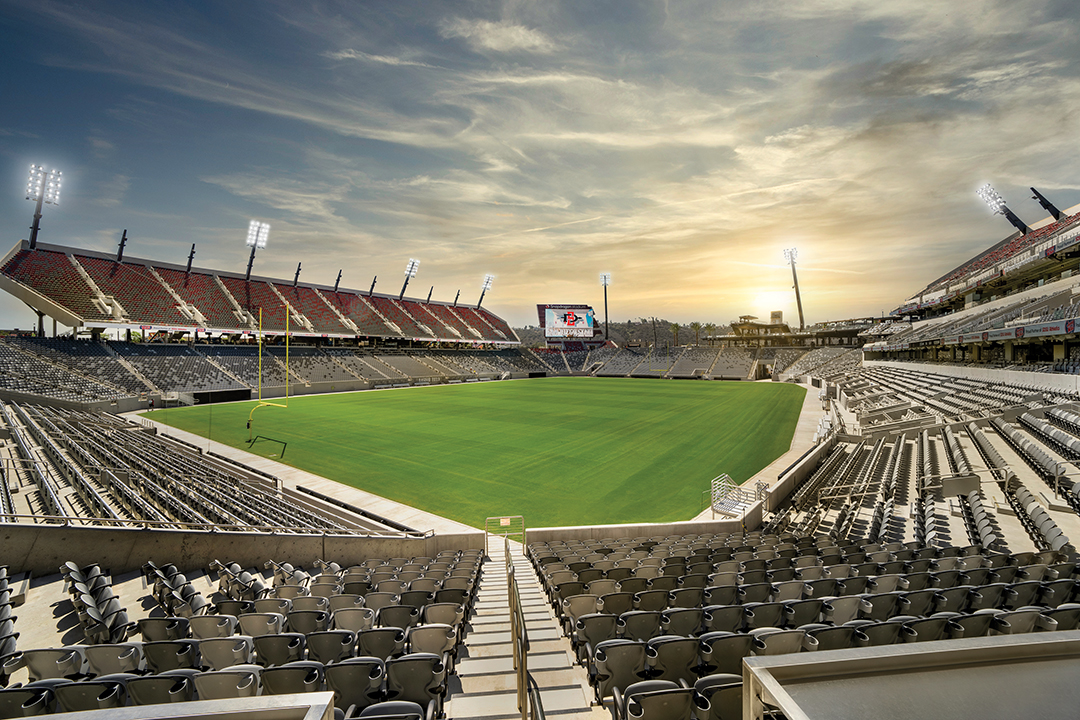
The wait is over.
On Saturday, September 3, Snapdragon Stadium makes its grand debut with the opening game of the 2022 Aztec football season versus the Arizona Wildcats. It’ll be not just the first look for all the fans in attendance, but the stadium’s worldwide introduction as the game is broadcast on CBS.
Though determining exactly what would replace Mission Valley’s 50-year-old San Diego Stadium of many names was a long and sometimes contentious conversation, in reality, Snapdragon’s doors will open less than two years after demolition on its predecessor began. The approach of Day One has the team at San Diego State University who’ve guided it to the finish line understandably eager in anticipation.
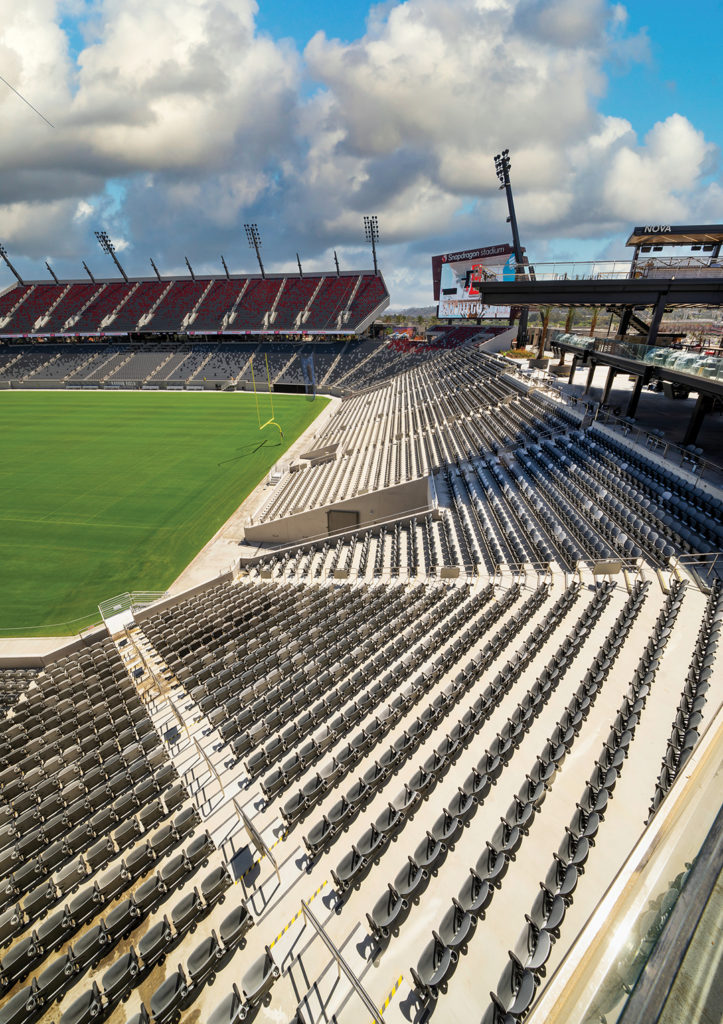
“I’m very excited for the community of San Diego,” says John David Wicker, SDSU Director of Intercollegiate Athletics. “We didn’t just build this for seven Aztec football games, we built it for concerts, soccer matches, all the different things that you can do in there because we really want the entire community to have a reason to come to our building.” As Wicker envisioned, the purpose-built stadium is already confirmed to host not only those seven football games between September 3 and November 26. On September 17, the San Diego Wave FC National Women’s Soccer League team will play its first match on what will be permanent home soil after previously playing at USD’s Torero Stadium. And parrotheads will descend on Snapdragon when Jimmy Buffet headlines the stadium’s inaugural concert event with Jason Mraz on October 22. More announcements to the calendar are expected in the coming weeks in addition to confirmation of longer lead partnerships, sporting events, and SDSU athletics beyond football.
For Wicker, a packed calendar is exactly what he’d envisioned all along. “One of the key things for me was that this had to be a building that could be used 365 days a year,” he says. “There’s no reason to build a stadium and pour $130 million into it and use it seven times a year, so I really wanted to make sure that we built something that could be used [every day].” From the structure itself to the seating bowl, concessions to premium spaces, the stadium was created with this goal in mind.
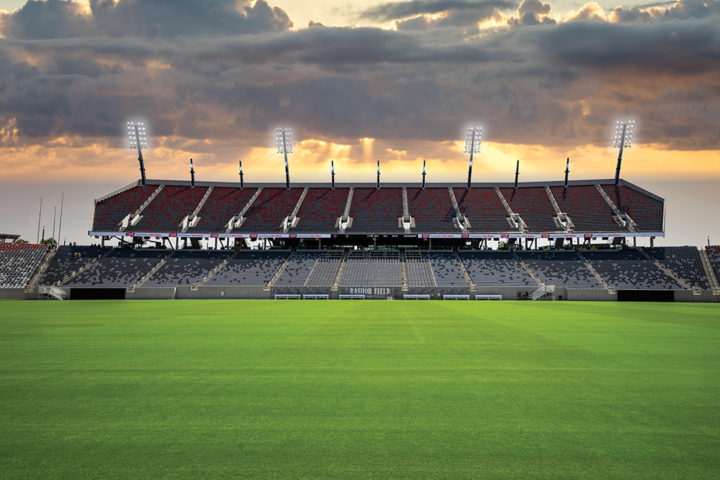
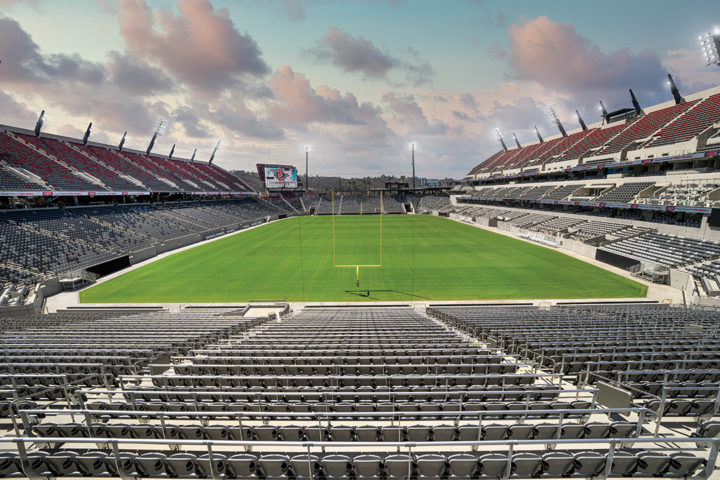
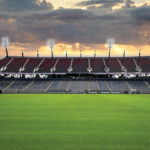
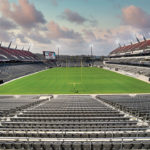
Also atop Wicker’s list of priorities was honoring the stadium’s place, both geographically and in the history of San Diego. “We told the architects we wanted … 60 percent stadium — seats, the field, concourses, that sort of thing — but then I wanted it to be 40 percent ‘San Diego,’” he says. “We’ve really taken a nod toward the community. We’re in Mission Valley, it’s Kumeyaay land, it used to be a dairy farm, there’s this phenomenal 50-year history with the stadium prior, so there are a lot of different pieces in the building that I think people will find special and be able to attach to because it is so ‘Southern California.’” From that inspiration, the stadium’s Sycuan Piers, three levels of elevated, standing room only “seating” that jut out over the seating bowl in the southwest corner, are intended to mimic San Diego’s piers extending into the ocean. A statue of Jack Murphy and his dog Abe that greeted fans at the former stadium that once bore his name now has pride of place outside Snapdragon’s north end. Nearby, the northeast corner features pavers that are actually concrete chunks from the old building. And additional elements honor the site’s lengthy history as host of Super Bowls, World Series, concerts, and other unforgettable events in San Diego. Tributes to military, murals by local and student artists, and even some SDSU history (meet the SDSU Wampus Cat!) are incorporated to bring together an array of elements that make Snapdragon a destination for all San Diegans.
Of course, as part of the SDSU campus, students were a significant consideration in the creation of the stadium. “We want them to be a huge part of this,” says Tom Greene, SDSU Athletics Ticket Sales Director. Five thousand of the stadium’s 35,000 seats will be allocated for student seating at every home football game. Some of that space will be what’s known as “safe standing” — a product often used in European soccer stadiums that encourages spectators to (surprise!) stand and cheer for their team. “That speaks to how bullish we are on soccer. The Wave and other teams that will play [here] can utilize that as a supporter section built in, but we also think that for our students, it’s going to be a ton of fun,” says Greene, who hopes the section will generate a similar energy to the school’s ardent basketball fans, nicknamed “The Show,” who ignite Viejas Arena. Students will be able to use their campus meal plan cards (alcohol excluded, of course) at the stadium’s concessions, which include signature San Diego eateries like Best Pizza & Brew, Cali BBQ, The Crack Shack, Everbowl, Gaglione Brothers, Hodad’s,
The Taco Stand, and Batch & Box.
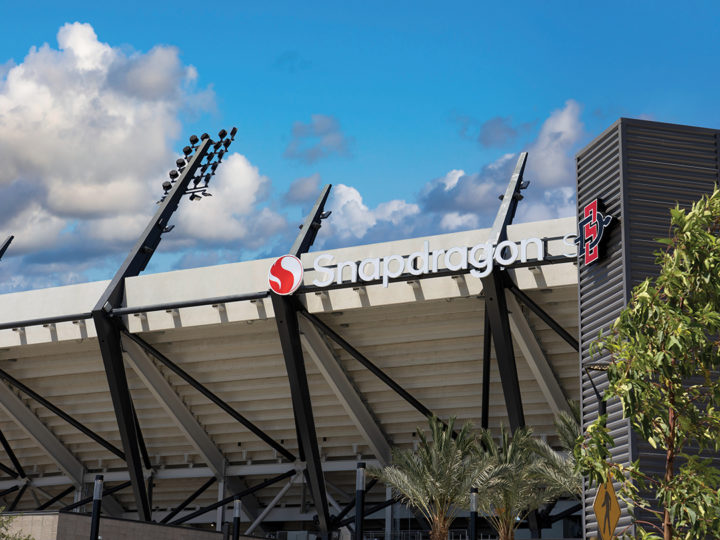
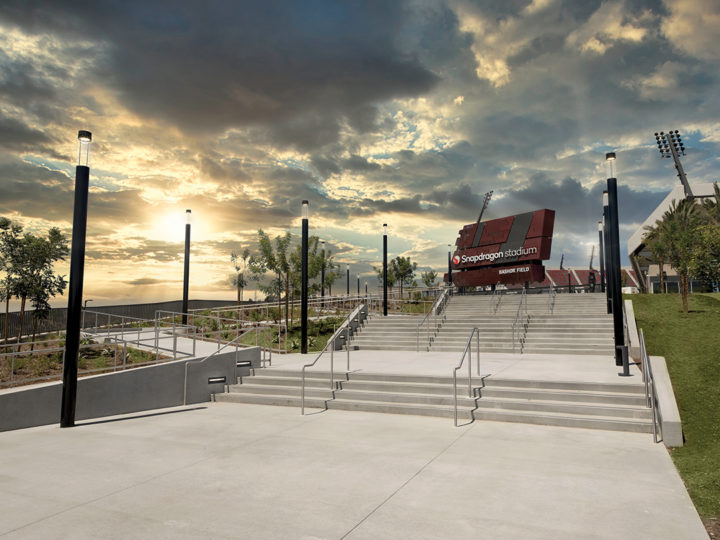
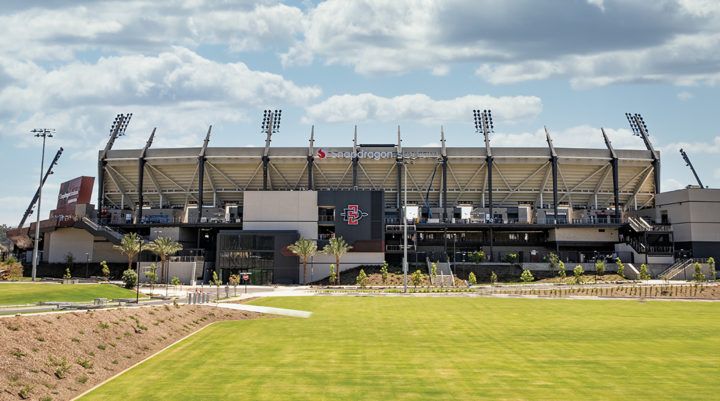
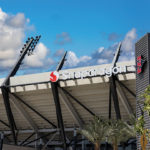
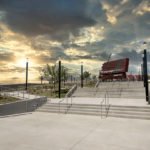
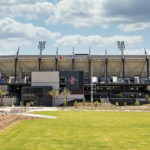
As the opening approaches, Wicker tempers his enthusiasm with just enough practicality. “I think the big thing is for people to be patient with us,” he says. “There’ll be some hiccups the first couple games, the first year, but it is going to be such a dynamic experience for everyone, and I’m just excited for everybody to get in and have a chance to see it.” snapdragonstadium.com

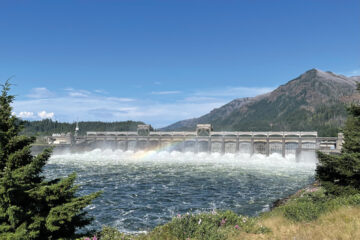
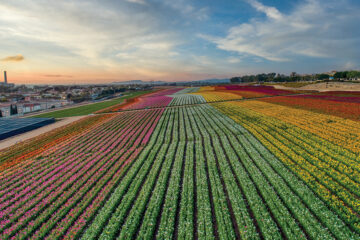

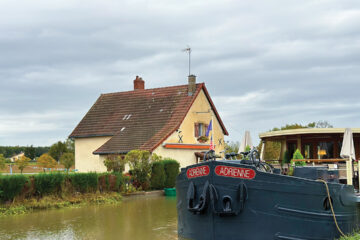
Comments